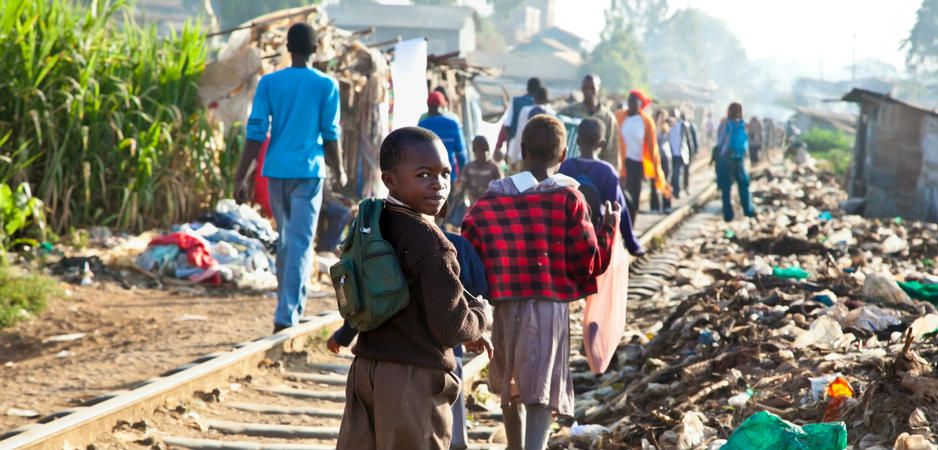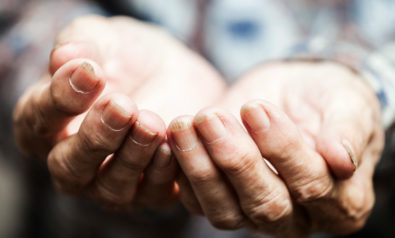In the developed world, poverty is neither sufficient nor a necessary condition for homelessness.
Regardless of wealth, political ideology, government decree or religious affiliation, there is no place on the globe that has succeeded in eliminating homelessness. This is extraordinary, when you consider that homelessness, particularly among children, is distinguished as a grave ethical failure.
Various domestic and international programs have sought to reduce this problem. The most important is the law passed by the United Nations Convention on the Rights of the Child, which gives legal rights to children including the right to a decent life, to a home and an identity, protection, food, health, education, and the opportunity to express oneself.
Yet, non-domiciled youth still live in full public view without permission, even in the wealthiest nations. They are at once terrifying and pathetic to the civil politic, deprived of being able to join society, and considered potentially too hazardous to be left unattended.
Who are these children and what characteristics do they have?
Street Children and Homeless Youth
I have defined street children as living in the developing world and homeless youth in the developed world. While the definition of each is based on living without adults, often in peer families, there are crucial differences, which is why we separate them into two groups. These differences have important mental health consequences for the two groups, particularly when gender is considered. For example, street children begin life on the streets before their teen years; homeless youth arrive well into their teens. Some 90% od street children are boys. Homeless youth have an equal gender ratio.
Nearly 100% of street children come from poor families, but only a very small percentage, certainly less than 1% of poor children become street children. In the developed world, poverty is neither sufficient nor a necessary condition of homelessness.
When we refer to homeless youth, this does not include those who are part of homeless families. Homeless youth is defined in the US by the Stewart and McKinney Homeless Assistance Act of 1987 as lacking regular adequate nighttime residence, or as living in a place not ordinarily used for sleeping, like the floor of a friend’s house.
We know that parents of 60% of runaway youths in America have alcohol and drug problems and half of all runaways have been abused at home. The overwhelming reason why American children flee is abuse, followed by neglect. Poverty is far down the line: Most come from middle class families.
When assessing the wellbeing of these boys, it was found that while they needed material help, like access to health care, shelter, better food, etc., they had a higher standard of living than their siblings and peers who remained at home, who were often malnourished, living in unhygienic conditions, and susceptible to disease and injury.
Strange as it might seem, as many as 90% of children seen on the streets in the developing world are not parentless or homeless: They are working children, who begin work at an age when children in the developed world are still in school. Rather than showing their parents their school papers, they show them the money they earned. They are in essence supporting a family too poor to send their children to public school. The other 10% – far less than the inflated numbers provided by organizations that serve them – live on the streets, and most of them periodically return home.
The Hard Numbers
It is very difficult to ascertain the numbers of street children and homeless youth. The term “street child” was first introduced by UNICEF following the UN International Year of the Child in 1979. It was intended to deal with what UNICEF saw, mostly in Latin America at the time, but eventually throughout the developing world, as a newly emerging group of children working in the streets.
The definition for both homeless youth and street children is elusive, because the organizations that serve these children have a tendency to inflate their numbers to get more funding, often by by combining categories: “children of the street,” “children on the street,” “homeless children,” “abandoned children,” “children in conflict with the law,” “children in especially difficult circumstances,” and “exploitive child labor” are only some of the monikers they might be included or excluded from the counting of street children and homeless youth. Exaggerated numbers can increase the feeling of insecurity and justify cleaning-up the streets, or underestimate them to preserve the image of a country.
Take the claim by UNICF that because of AIDS-related deaths, over 75 million African children are orphaned, which they define as losing one parent. UNICEF advertises this larger number, (true orphans are what they refer to as “double orphans,” make up less than a third of that number), in spite of the fact that single parent families are the norm.
A new term, which can be applied across cultures, is “children in street situations” (CSS), moves the emphasis from the child to what street children and homeless youth face in the streets. The child “in a street situation” is seen as a social actor, adapting his/her behaviour to the social context, by making use of many resources concerning norms and values, relations with others, self-image, and gender.
Gender and Mental Health
Female street children have more mental health problems than male street children, because girls are taught by their mothers to cope with the vagaries of poverty by staying at home, and out of the streets.
Poor boys are raised for an early independence from their homes, thus following a more natural trajectory.
Studies suggest that street boys function better compared to other poor boys that stayed with their families, and to their brothers who remained at home. This is because the less psychologically competent boys are unable to leave home and follow the expected cultural rites of male child development.
On the other hand, because girls are raised to remain at home, when they became street children it is because they have a difficult relationship with their families. Other authors have confirmed these results in Sudan, Rwanda, 2 Kenya, and Peru.
The picture among homeless youth is different. In the developed world, both genders are raised to stay at home; both boys and girls run away if they have been abused at home and cannot resolve their anger. In a national study of American homeless adolescents, 60% of girls were sexually abused before leaving home (not quite 25% for boys).
By the time Dominion was seven years of age, she would fetch water, make fires, and cook most meals. However, only complete financial destitution or the utter breakdown of her mental health would result in sending her girl to the streets.
While there is a parity of the background of males and females among runaways, their coping styles are not equally effective. Runaway American girls have lower self-esteem and more depression than runaway boys; evidenced by the fact that American female runaways are more likely to attempt suicide than males. Laurie Schaffner found that a third of American runaway girls came from two-parent families, and another third from single parent (female headed) families, and a third with a stepparent (stepfather).
Resilience
In Colombia, the difference in mental health among sub groups of male street children, but the majority of street boys were not psychopathologically or otherwise delinquent or abused drugs, and many developed adequate coping that allowed them to function at least as well as their poor counterparts who spent less time in public view.
The coping strategies of these street boys included finding a niche in the economic market, which gave them sufficient income to eat and clothe themselves, take advantage of programs that served them, and stay sufficiently informed about their physical health. They formed close friendships with their peers and, in many cases, belonged to strong communities. At the same time, they consistently maintained some form of connection to their family.
Matthew Davies, for instance, found that only a small percentage of the children in his sample were rejected by their families and only a small percentage rejected their families. In choosing to be a street child, Davies believes the children made a competent and informed choice about being a member of that group. He believes that street child culture breeds an activism toward self-preservation and toward social justice. They develop valuable skills and supporting friends. When assessing the wellbeing of these boys, it was found that while they needed material help, like access to health care, shelter, better food, etc., they had a higher standard of living than their siblings and peers who remained at home, who were often malnourished, living in unhygienic conditions, and susceptible to disease and injury.
In other parts of the developing world, it has been shown that the positive mental health characteristics of street boys included their desire to learn and to have an education, their knowledge of how to survive, of having experienced the difficulty of life yet to find ways to accommodate or overcome them. They were capable of a high level of self-management in organizing themselves in groups and had multiple friendships, and they were willing to work, and be creative in their recreation. Other studies are less optimistic.
Rites of Passage
Years ago, I met Pleasant, a 28-year-old mother of four, in her home in Mathare Valley, one of the largest slums in Sub-Saharan Africa. There was no running water or electricity. Open sewage flowed through the streets. Sleeping like sardines in a tin, there was no privacy.
At the time of the interview, Pleasant had been with a night watchman for five years in what could be called a common law marriage. He was not the biological father of her children, and she did not expect him to be around for long. “This is what most men do,” she said simply. Pleasant had developed strong ties to other women in her neighborhood who were also living without men. According to Pleasant, “This is what women do.” These women helped each other when necessary, including obtaining food and gaining access to medical care.
By the time Pleasant’s oldest son, Mbisa, had his sixth birthday, he was accustomed to playing with older boys in the neighborhood streets. He had plenty of time to practice being on his own because his mother who loved him deeply rarely had time or energy to supervise his whereabouts. After Pleasant’s common law husband left (and the household income dropped), Mbisa began to drift further from home and go into other neighborhoods to park cars, clean windows, and find other sources of income for his family. Pleasant worked off and on as a domestic servant and showed her daughter, Dominion, how to take care of household chores.
We believe that children in street situations, in nearly all cultures in the world, have become symbols of moral judgement because they violate the norms that most cultures give to children.
By the time Dominion was seven years of age, she would fetch water, make fires, and cook most meals. However, only complete financial destitution or the utter breakdown of her mental health would result in sending her girl to the streets.
Mbisa, became a young man at the time when boys in the west were beginning adolescence. Dominion is likely to repeat Pleasant’s life, and if the younger boys have the wherewithal to support their family will they become street children. If not, they become a drain a very fragile system.
Easy Targets
In many places in the world, street children have been targeted by the police for no more than petty crimes and haughty behavior. In fact, the number of street children killed in Brazil supersedes the total casualties in the civil war in Lebanon.
Simon, a child of 15 years of age, was murdered by a police reservist. So many poor unkempt children had already been mistreated that his demise would not have aroused much concern except that he was shot five times at point blank range, kicked into the gutter, and then spat upon. Simon had stolen a signal lens from a parked car.
No one said that he was belligerent or that he assaulted anyone. How was it that Simon’s relatively minor crime aroused such anger in the police officer? Was he seen in the context of a grand menace? Was he used as a warning to the larger group of street children? If these answers could be found we might be able to offer a preventive education to the public to help reduce this hostility.
We believe that children in street situations, in nearly all cultures in the world, have become symbols of moral judgement because they violate the norms that most cultures give to children. They do this by not being under the same roof as their parents, by working instead of going to school, and by assuming the right to enjoy the fruits of their work as they choose (such as consuming drugs). What makes the climate so volatile is that the phenomena of children taking on the roles of adults are peaking at a time when many societies are moving from traditional to modern codes of conduct.
What we must conclude, as difficult as it is, is that all the children in the world cannot meet the standard of the idealized childhood we all want for our children, indeed for all children.
The use of comparisons between the developed world, where there is an extended period of adolescence and the developing world, where this is shortened, shows among other things a wide diversity of the lives of children in street situations.
Recognition of the complexity of the child rearing, including the differences of gender and social class, will allows us to help the plight of street children and homeless youth – indeed of all children in need.
The views expressed in this article are the author’s own and do not necessarily reflect Fair Observer’s editorial policy.
Yavuz Sariyildiz / Shutterstock
Support Fair Observer
We rely on your support for our independence, diversity and quality.
For more than 10 years, Fair Observer has been free, fair and independent. No billionaire owns us, no advertisers control us. We are a reader-supported nonprofit. Unlike many other publications, we keep our content free for readers regardless of where they live or whether they can afford to pay. We have no paywalls and no ads.
In the post-truth era of fake news, echo chambers and filter bubbles, we publish a plurality of perspectives from around the world. Anyone can publish with us, but everyone goes through a rigorous editorial process. So, you get fact-checked, well-reasoned content instead of noise.
We publish 3,000+ voices from 90+ countries. We also conduct education and training programs
on subjects ranging from digital media and journalism to writing and critical thinking. This
doesn’t come cheap. Servers, editors, trainers and web developers cost
money.
Please consider supporting us on a regular basis as a recurring donor or a
sustaining member.
Will you support FO’s journalism?
We rely on your support for our independence, diversity and quality.
















Comment
The article is thought provoking and worthy of comments.